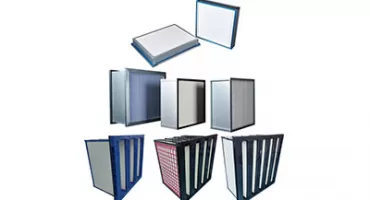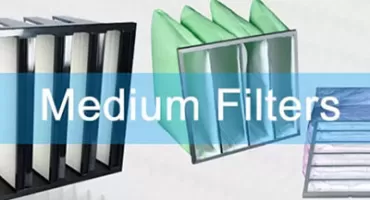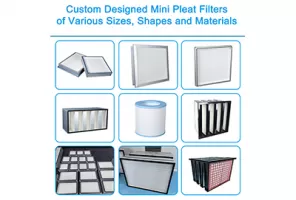 March 25, 2025
March 25, 2025
Gas turbines are the workhorses of power plants, aviation, and industrial operations. However, their performance and lifespan heavily depend on one critical factor: clean air intake. Without proper gas turbine filtration, contaminants like dust, sand, salt, and moisture can cause severe damage—leading to reduced efficiency, frequent breakdowns, and skyrocketing maintenance costs.
In this comprehensive guide, we’ll dive deep into:
✔ How gas turbine filtration works (and why it’s non-negotiable)
✔ Different types of filtration systems (and which one suits your needs)
✔ The real cost of poor filtration (case studies & data)
✔ Best practices for maintenance & upgrades
✔ Future trends in turbine filtration technology
Gas turbines require massive volumes of air for combustion—but this air is rarely clean. Depending on the environment, it can contain:
- Dust & sand (causing blade erosion)
- Salt aerosols (leading to corrosion)
- Moisture & oil (resulting in fouling & deposits)
- Industrial pollutants (clogging filters faster)
1. Reduced Efficiency – Dirty air disrupts combustion, increasing fuel consumption by 3-5%.
2. Mechanical Damage – Particle erosion can degrade compressor blades, requiring expensive replacements.
3. Unplanned Downtime – A single filtration failure can halt operations, costing thousands per hour.
4. Higher Emissions – Inefficient combustion leads to increased CO₂ and NOx output.
Not all filters are created equal. The right choice depends on:
✔ Environmental conditions (desert, coastal, urban)
✔ Turbine size & airflow requirements
✔ Operational priorities (cost vs. performance)
1. Inertial Separators (Pre-Filters)
- Best for: High-dust environments (deserts, construction zones)
- How it works: Uses centrifugal force to eject large particles (50+ microns)
- Pros: Low pressure drop, high dust capacity, minimal maintenance
- Cons: Doesn’t capture fine particles
2. Pulse Self-Cleaning Filters
- Best for: Heavy dust load areas (cement plants, mining)
- How it works: Automated compressed air pulses clean the filters without shutdown
- Pros: Zero downtime cleaning, long filter life
- Cons: Higher upfront cost, requires compressed air supply
3. HEPA & Synthetic Panel Filters
- Best for: Coastal & industrial areas (salt, fine pollutants)
- How it works: Multi-layer synthetic media traps sub-micron particles
- Pros: 99.97% efficiency at 0.3 microns
- Cons: Higher pressure drop, frequent replacements in harsh conditions
4. Coalescing Filters (For Moisture & Oil Removal)
- Best for: Humid climates & oil-contaminated air
- How it works: Specialized media merges tiny water droplets into larger ones for drainage
- Pros: Prevents corrosion & ice formation in cold climates
- Cons: Needs regular drainage checks
5. Hybrid Filtration Systems
- Best for: Extreme environments (e.g., offshore rigs, deserts)
- How it works: Combines inertial + HEPA + coalescing for maximum protection
- Example: Offshore wind turbines use 3-stage filtration to combat salt & moisture
| Benefit | Impact |
|---|---|
| Fuel Efficiency | Up to 5% reduction in fuel use (DOE study) |
| Turbine Lifespan | Extends compressor blade life by 2-3x |
| Maintenance Costs | Cuts unplanned outages by 50%+ |
| Emissions Control | Reduces CO₂ by 3-7% via cleaner combustion |
1. Regular Inspections (Checklist)
- Visual checks for filter damage, clogs, or moisture
- Pressure drop monitoring (sudden spikes = clogged filters)
- Air quality testing (ensure filters meet ISO 16890 standards)
2. Right Filter for the Right Environment
| Environment | Recommended Filter |
|---|---|
| Desert (Sand/Dust) | Inertial + Pulse Self-Cleaning |
| Coastal (Salt/Moisture) | HEPA + Coalescing |
| Industrial (Pollutants) | Synthetic Panel + Carbon Layer |
3. Upgrade When Necessary
- Older systems may lack nanofiber technology (better efficiency, lower pressure drop)
- Smart filtration (IoT sensors for real-time monitoring) is becoming standard
4. Emergency Preparedness
- Keep spare filters for rapid replacements
- Train staff on quick-response protocols
1. Nanofiber Filters – Thinner, stronger, more efficient than traditional media.
2. AI-Powered Predictive Maintenance – Sensors detect clogs before they cause damage.
3. Sustainable Filter Materials – Biodegradable & recyclable media in development.
A well-designed gas turbine filtration system isn’t just an accessory—it’s a profit protector. The right filters:
✅ Boost efficiency (saving fuel costs)
✅ Prevent catastrophic damage (avoiding $500k+ blade replacements)
✅ Ensure compliance (meeting emissions regulations)
Need a customized filtration solution? Contact our experts today for a free turbine air quality assessment.
 May. 06, 2024
HEPA Filter Supplier
May. 06, 2024
HEPA Filter Supplier
 Aug. 24, 2023
Why Choose the F6 Medium Efficiency Air Filter?
Aug. 24, 2023
Why Choose the F6 Medium Efficiency Air Filter?
 Dec. 31, 2024
Understanding Cleanroom HVAC HEPA Filters: A Critical Component for Controlled Environments
Dec. 31, 2024
Understanding Cleanroom HVAC HEPA Filters: A Critical Component for Controlled Environments